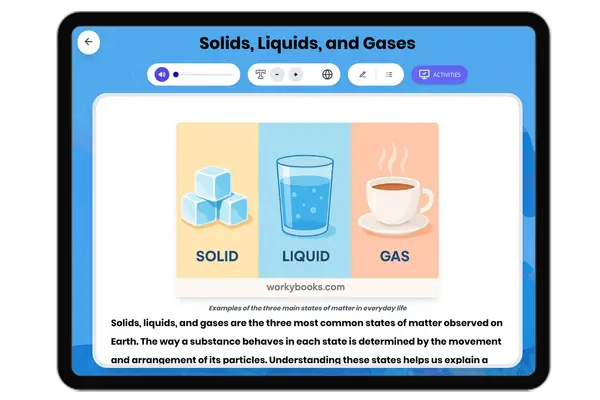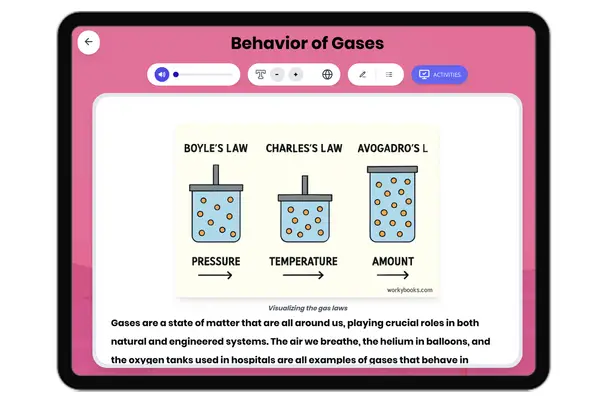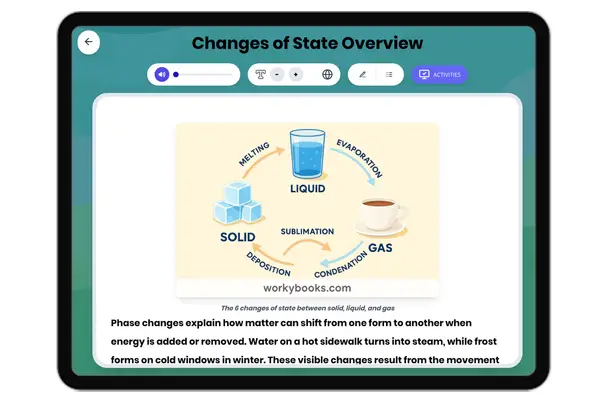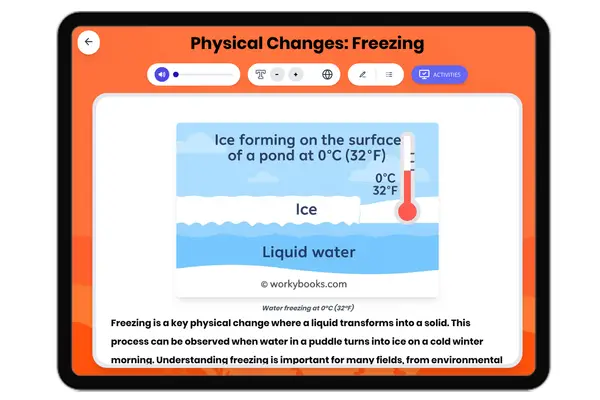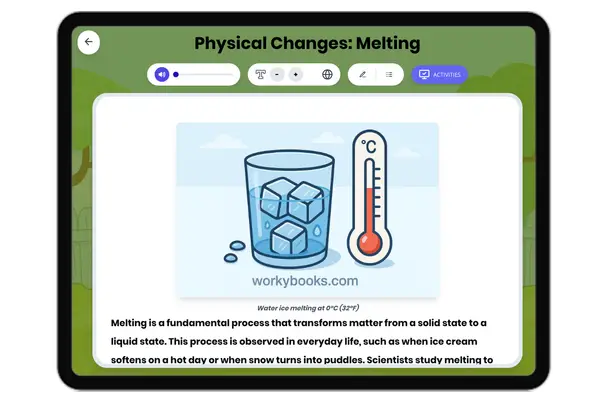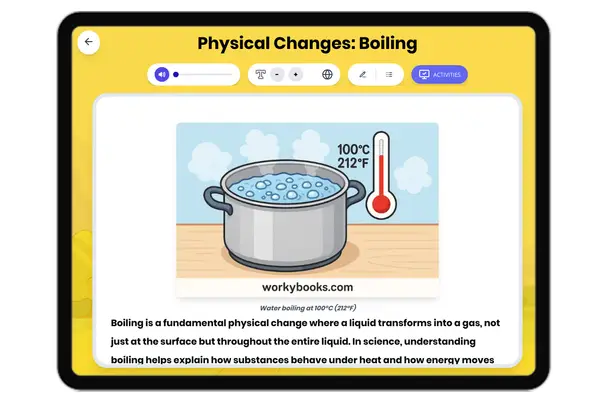Physical Changes: Sublimation — Reading Comprehension
Premium Resource
Grades
- 5
- 6
- 7
- 8
Standards
- MS-PS1-4
PRINT+DIGITAL RESOURCE
This learning resource is available in interactive and printable formats. The interactive worksheet can be played online and assigned to students. The Printable PDF version can be downloaded and printed for completion by hand.
About This Reader
This educational passage for grades 6-8 explores the science of sublimation—a physical change where a solid transforms directly into a gas without becoming liquid first. Students will learn the mechanisms and conditions that favor sublimation, supported by real-world examples such as dry ice fog, freeze-dried foods, disappearing snow on cold dry days, and shrinking mothballs. The passage aligns with NGSS standard MS-PS1-4, encouraging scientific thinking by explaining observable phenomena and underlying cause-and-effect relationships. Activities include a glossary, multiple-choice and writing questions, and graphic organizers to deepen understanding. Audio integration and Spanish translations are provided for accessibility, making this a comprehensive resource for diverse learners.
Perfect For:
👩🏫 Teachers
- • Reading comprehension practice
- • Auto-graded assessments
- • Literacy skill development
👨👩👧👦 Parents
- • Reading practice at home
- • Comprehension improvement
- • Educational reading time
🏠 Homeschoolers
- • Reading curriculum support
- • Independent reading practice
- • Progress monitoring
Reading Features:
📖
Reading Passage
Engaging fiction or nonfiction text
❓
Comprehension Quiz
Auto-graded questions
📊
Instant Feedback
Immediate results and scoring
📄
Printable Version
Download for offline reading
🔊
Read Aloud
Voice-over with word highlighting














